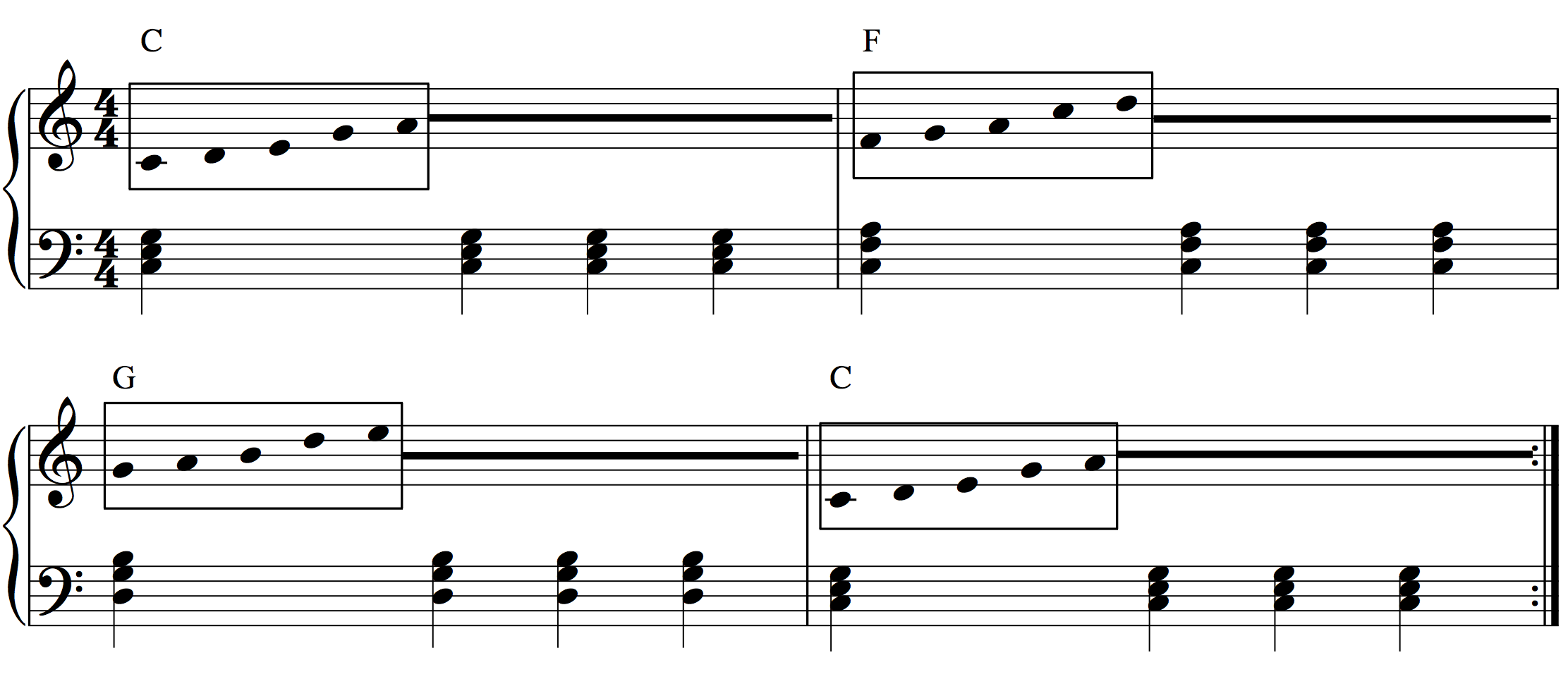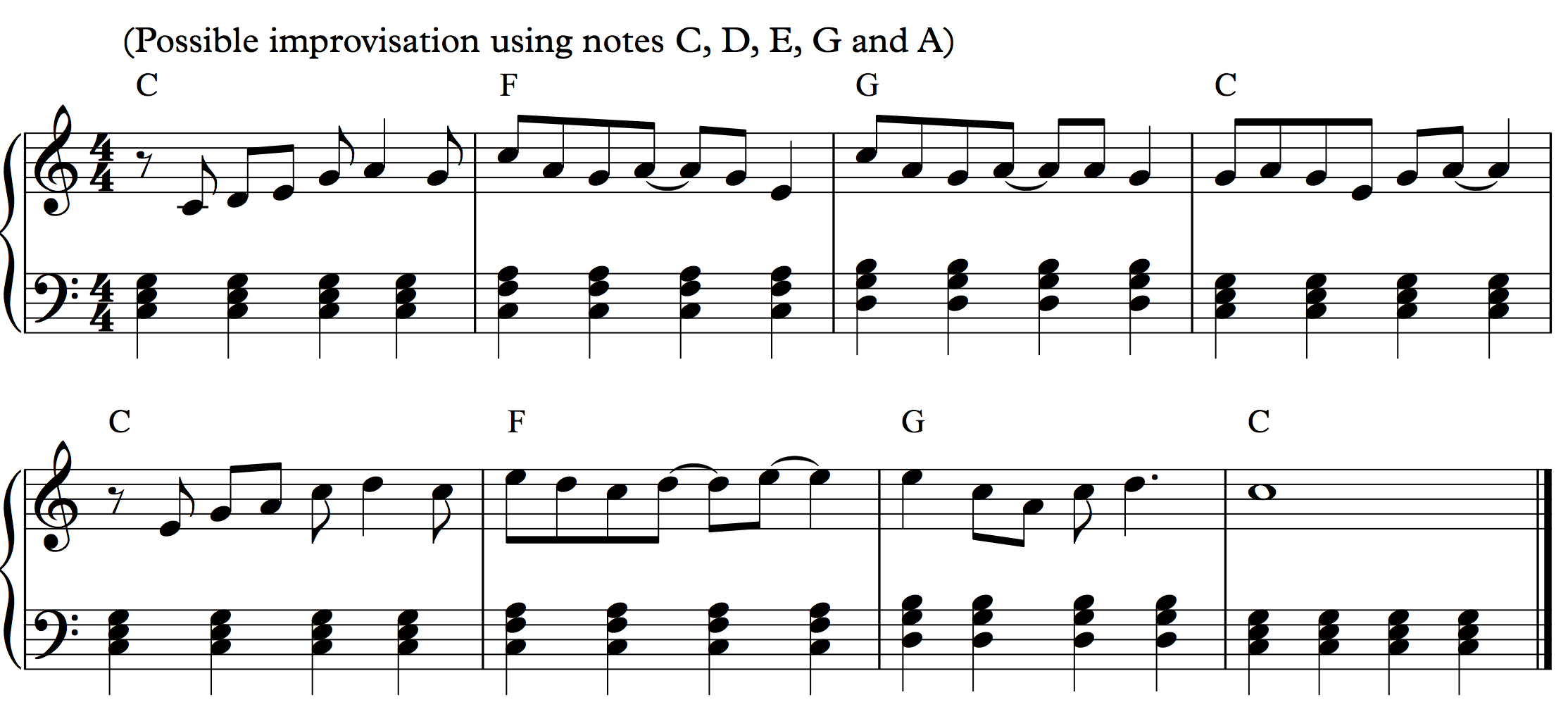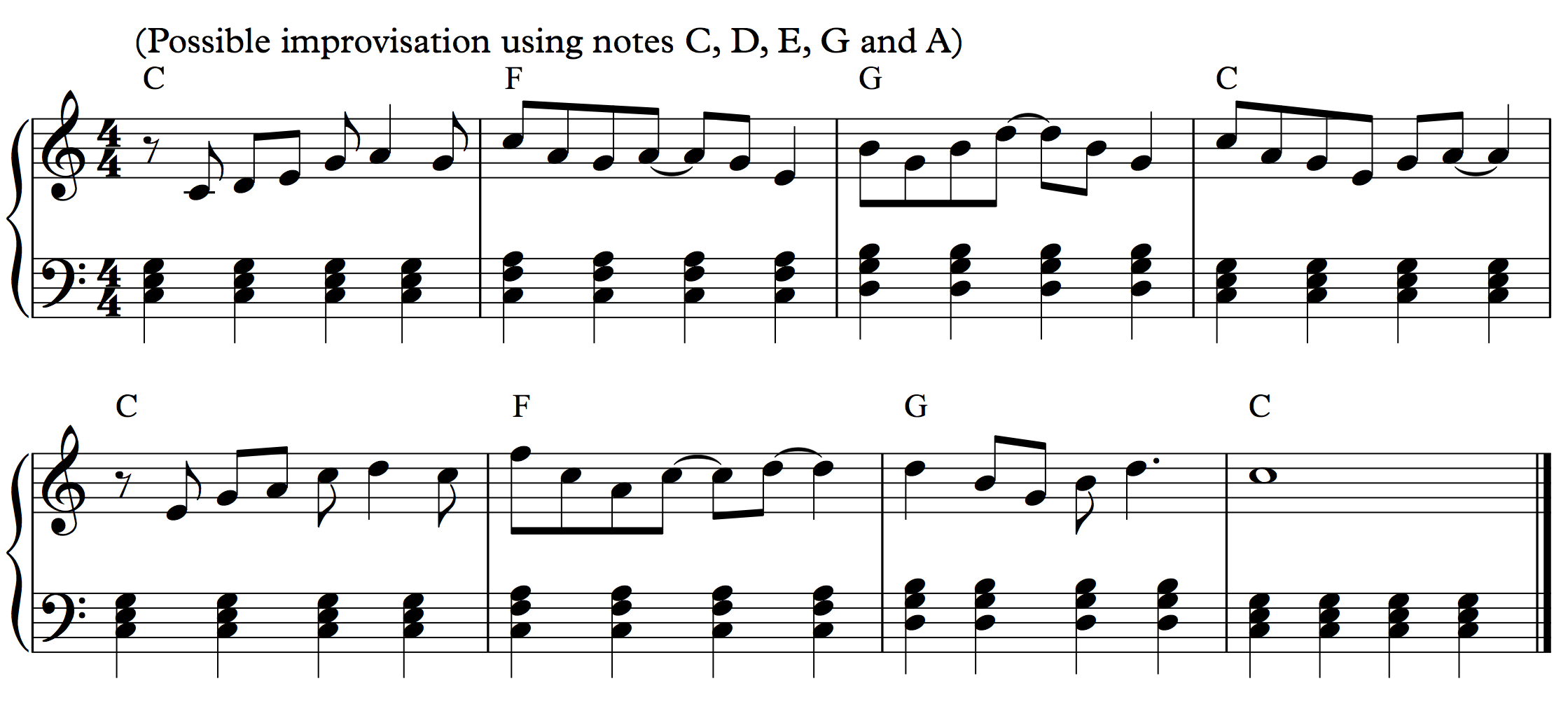Improvising on the Piano with the Pentatonic Scale
by Christian Morris
The pentatonic scale provides an easy way for beginners to start to improvise with confidence. It also provides the starting point for more effective and advanced improvising.
What is the pentatonic scale?
For a full explanation on how to form the pentatonic scale, take a look at this 8notes lesson.
To briefly recap, however, the major pentatonic scale is made up of the first, second, third, fifth and sixth degrees of the scale. In the case of C major, these notes would be C, D, E, G and A.
There is also a minor pentatonic scale. This is formed from the first, third, fourth, fifth and seventh degrees of the scale. In the case of the relative minor of C (i.e. the minor key that also has no sharps or flats in the key signature), the notes are A, C, D, E, and G.
The notes of A minor and A minor pentatonic are, you will notice, the same as C major and C major pentatonic. The effect of each is distinct, however, because of the different patterns of successive intervals and home notes (i.e. the first degree of the scale, C in the case of C major, A in the case of A minor).
Why are these scales effective for improvising?
Because they omit the most dissonant interval of the scale i.e. there is no semitone between any of the notes. For example, unlike the C major scale the C pentatonic has no note F or B, so there is not E to F or B to C semitone movement in the scale. As we shall see this allows us to greatly reduce the number of 'wrong notes' when improvising.
So show me how it works!
Let's take a very simple left hand chord sequence in C major, consisting of the chords I, IV and V:
Once you know the key, in this case C major, the pentatonic scale formed from this scale (C, D, E, G, A) can be used to improvise over any of these chords.
Now try your own improvisation (left hand is optional if you wish to concentrate on the improvisation for now):
You may also wish to try it with this backing:
You may notice that some notes sounds more effective than others as the chords change, but none sound definitively 'wrong'. It is for this reasons that sometimes people see this kind of improvising as a kind of 'cheat', since the player is not fully understanding and responding to chord changes.
It provides the key, however, to the next step, which is to do just that.
Let's look at that chord sequence again. This time, instead of playing C major pentatonic all the way through, we will use pentatonic scales based upon all three chords. The notes are:
C major: C, D, E, G, A
F major: F, G, A, D, C
G major: G, A, B, D, E
This is what these suggested notes look like on the stave:

And here's what an improvisation might sound like:
Notice that the notes seem to fit better this time, because now every pentatonic scale fits exactly over each chord. Give it a try!
And here's that backing again:
If you enjoyed this lesson, why not try our lesson on pentatonic 12-bar blues improvising.






